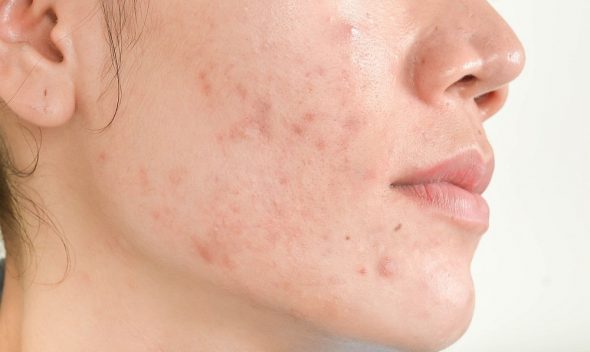Laser Hair Removal Most popular questions!

For several years now, the technique known as “definitive” or “permanent” hair removal has become the preferred technique. More and more women are using this procedure but is it really definitive and what are the risks. Answers in nine points to the questions you have about laser hair removal.
How does it work?
Laser hair removal works by destroying the hair bulb at the base of the hair. With dark hair, this area is pigmented. A laser is a device that emits very special light because it is made up of a single wavelength, defining its monochromatic character. According to this wavelength, specific to each laser, the photons that constitute this light will be more or less absorbed by the different structures encountered, in particular according to their color. Hence, pigmented hair represents a black or brown target. Depilatory lasers are absorbed by this color due to melanin, the natural pigment of the skin. Once absorbed, the light is transformed into heat. This will destroy the hair follicle and ensures the phenomenon of durable hair removal.
The target of the laser is therefore not really the root but the pigment that gives it its brown color. This has two essential consequences: on the one hand, although dark hair can be effectively destroyed, the laser does not operate on unpigmented hair, such as white, blond or roux hair… Moreover, the laser beam will not differentiate between the melanin pigment of the bulb and the abundant melanin pigment present in the epidermis of pigmented skin (naturally pigmented, or following tanning).
Doctors, Dermatologists, Beauticians, All can practice laser hair removal.
Wrong, laser hair removal must be performed by a dermatologist doctor. It can also be performed by a competent assistant provided that the latter is under the supervision of a dermatologist. Before starting, it is important to consult a doctor to determine the number of sessions and the type of laser to be used.
The laser beam penetrates deep into the epidermis.
Wrong: The laser emits invisible light that passes through the skin by only a few millimeters. This light is captured by the pigments in the hair follicle. It then damages the functions of the follicle and prevents it from making a hair.
Light or dark skin, the laser remains the same for everyone.
Wrong. For clear skin, dermatologists use the Alexandrite laser in most cases. For mixed or even very dark skins it is recommended to use the Nd-Yag laser. Finally, the Diode Laser can be used on both clear and dark skins.
There are special precautions to be taken before starting a session.
True. It is imperative to protect yourself from the sun in the weeks preceding laser hair removal (6 weeks minimum), as tanned skin contraindicates the treatment. After a session, you should also avoid exposure to ultraviolet rays (3 weeks minimum). Winter is the ideal time to have laser hair removal.
Laser hair removal can lead to complications.
True. The application of lasers to dark or tanned skin can cause a reaction of excessive melanin production in the skin surrounding the treated hair. Generally, this hyperpigmentation is temporary and fades after several months. Sometimes, unfortunately, hyperpigmentation is permanent.
Depigmentation is the opposite phenomenon. The laser, badly adjusted, then affects not only the hair but also the cells that produce melanin in the skin. They are then damaged or destroyed and can no longer synthesize melanin, which causes this depigmentation, which can be temporary if the melanin-producing cells are not destroyed.
Depigmentation can also be permanent if the melanocytes have been destroyed in large areas. The risks of burns are rare when the device is well adjusted to the color of the skin to be treated.
For more details check out our insight about permanent hair removal effectiveness and safety.
The laser is not carcinogenic.
True. The wavelengths of lasers used for hair removal are much longer than ultraviolet rays, which can be harmful if exposed to the sun without protection for too long. UV radiation is harmful to the skin because its energy is high enough to destroy certain components of the body such as DNA, which can cause cancer.
For the laser, this radiation is not powerful enough and does not damage body components.
Laser hair removal is painless.
True and false. It depends on your sensitivity to pain. The treatment consists of a series of pulses that are accompanied by a tingling and slight burning sensation. The treatment can give an impression comparable to what it would feel like to take a series of elastic shots.
Most patients tolerate this treatment without anesthesia. More sensitive patients may benefit from topical anesthesia with a cream. Within minutes after treatment, the skin in the treated area will turn pink. Patients may experience the sensation of sunburn for one or two days.
Laser hair removal is permanent.
Wrong. It is more commonly referred to as long-term hair removal. It reduces the number of hairs and their diameter. Thus, after each session and according to the zones, one observes depilation longer and longer (4 to 6 weeks in the beginning and several months after some sessions) and more and more marked, with the miniaturization of the few remaining hairs.
In total, after several sessions, the depilation is almost complete. Cases of regrowth are observed during hormonal (pregnancy, late acne, early baldness…), metabolic (weight gain,…), or medicinal (stopping a pill…) changes.
You may be interested in an expert natural more durable solution, Dr. Elix Hair Growth Inhibitor Serum has proved significant efficiency since 2014 (+4 years durable results), true skincare support and zero side effects!
Dr. Elix – Nature’s Finest Elixirs













I have read so many articles concerning blogger
lovers but this piece of writing is in fact a nice post,
keep it up.